Tekken Tag Tournament 2 – Review
by Dom
|
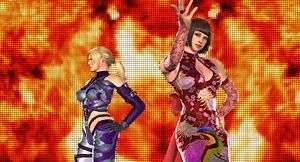 You’d think that the fighting genre was fairly limited; all you’re doing, really, is wearing down a health bar. But Tekken Tag Tournament 2 has done something that fighting games have been claiming to do for a very long time – it’s delivered genuine innovation. The basics are all there, and pretty much all the same – you attack with four limbs, each face button controlling a different limb. Combinations of the buttons come as throws or can generate combos. Clicking in the left stick will bring in your tag partner, and bring with it some of the most interesting changes to how Tekken works.
You’d think that the fighting genre was fairly limited; all you’re doing, really, is wearing down a health bar. But Tekken Tag Tournament 2 has done something that fighting games have been claiming to do for a very long time – it’s delivered genuine innovation. The basics are all there, and pretty much all the same – you attack with four limbs, each face button controlling a different limb. Combinations of the buttons come as throws or can generate combos. Clicking in the left stick will bring in your tag partner, and bring with it some of the most interesting changes to how Tekken works.
If you’ve played a Tekken game this generation, you’ll know something they’ve recently introduced is the “Rage” system – once your health reaches a certain level, your attacks will deal double damage until your Rage runs out. In the past, Rage was only activated when your fighter’s health fell below 10%. It was a good system, really; it gave you a slim opportunity to radically turn the tables in the fight – it was basically your desperate last stand, an all-out gambit.
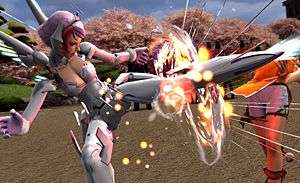 In TTT2, Rage is a far more common beast. If you send out your primary character and their health is taken below 50%, your secondary character’s Rage activates. So a tactical tag at this point allows you to bring in a heavy hitter, potentially ending the battle right there. This change may seem simple, but it alters the dynamic and pace of the Tekken game fundamentally. You have to really think when to tag; if you go too soon, you risk losing out on your partner’s Rage bonus, if you go too late, you may end up leaving your weak character in too long, and having them knocked out.
In TTT2, Rage is a far more common beast. If you send out your primary character and their health is taken below 50%, your secondary character’s Rage activates. So a tactical tag at this point allows you to bring in a heavy hitter, potentially ending the battle right there. This change may seem simple, but it alters the dynamic and pace of the Tekken game fundamentally. You have to really think when to tag; if you go too soon, you risk losing out on your partner’s Rage bonus, if you go too late, you may end up leaving your weak character in too long, and having them knocked out.
This means that it has become incredibly important to think about your character set-up; I tend to start with rapid-attacking, bouncy, legs-everywhere Lili (to chip away at health with quick medium and low attacks) and switch out to King, the leopard-masked wrestler, whose double-strength kicks and counters can easily wipe out straggling characters. If you’re more of a lone wolf, you could always just play with one character, but this requires a completely different strategy – the lone fighter will regain health over time, and their rage will activate twice every round. I rarely use this option, though. In Tag/Pair mode, it feels like you have two life bars, and both of them regenerate at a steady rate when you’re tagged out. In Solo mode, it feels like the trade-off to one life bar with a bit of resilience isn’t really worth it. That’s just me, though.
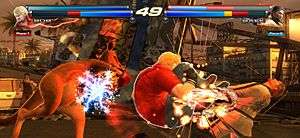 These alterations to the core gameplay really do make a huge difference. It’s given the fighting game some strategy, rather than it being just some free-for-all brawl. It took me a while to get used to, and I quickly learned in the Online Modes that if you don’t take advantage of the Rage system, you will be humiliatingly defeated. It’s given the game a frenetic pace and true sense of rhythm, and the game as a whole can only benefit from that.
These alterations to the core gameplay really do make a huge difference. It’s given the fighting game some strategy, rather than it being just some free-for-all brawl. It took me a while to get used to, and I quickly learned in the Online Modes that if you don’t take advantage of the Rage system, you will be humiliatingly defeated. It’s given the game a frenetic pace and true sense of rhythm, and the game as a whole can only benefit from that.
Moving outside the core mechanics, the game offers a wide variety of modes for the casual or hardcore player to enjoy. Wikipedia has the game listed with “most amount of Modes in any Tekken game”, and it shows. Probably the most notable is the campaign mode’s new disguise, Fight Lab. In Fight Lab, you play as Violet’s cybernetic fighting machine, Combot (from Tekken 4). There is a loose (and charmingly inane) story about Lee/Violet wanting to train Combot up to become a legendary fighter. This is shown in entertaining animated vignettes; the style is really distinct, and I never get bored of the visuals (but the madcap story on the other hand…). Nah, it’s not that bad. This mode seems like a refreshing bit of comic-relief, I think; it’s all very light, and there are all sorts of absolutely mental obstacles to overcome. In the Prologue, for example, for no reason that I can sensibly discern, Ganryu the sumo-wrestling pervert come flying horizontally at me. Okay.
The mode is like an interactive training program, given a story. It’s a smart way of giving us a Tekken campaign without being strictly canon, and offers a very interesting reward. As you complete tasks as Combot, you earn customisation points. These points can be cashed in for moves from every character in Tekken – want Bryan’s dual-punch move? Okay, there you go. Julia’s triple kick? That too.
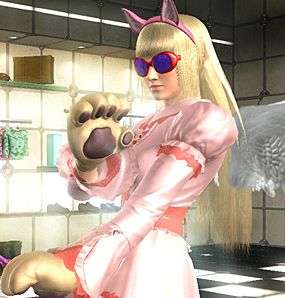 You can assign each input (for example, forward+ left kick) a separate move, unlocking and selecting more specialist moves the further on into the campaign you go. It’s a very nice idea – it gives you the opportunity to build a character that effectively has all your best moves in the game. I’m still experimenting with everything, but if I could make a Combot with King’s low staggers, Lili’s amazing flips and jumps and Bryan’s powerhouse punch combos, I think I’d die.
You can assign each input (for example, forward+ left kick) a separate move, unlocking and selecting more specialist moves the further on into the campaign you go. It’s a very nice idea – it gives you the opportunity to build a character that effectively has all your best moves in the game. I’m still experimenting with everything, but if I could make a Combot with King’s low staggers, Lili’s amazing flips and jumps and Bryan’s powerhouse punch combos, I think I’d die.
Alongside the customisation points, you also earn cash from various tasks you undertake across the game. This cash can be spent on character customisation, which initially seems far more limited than previous customisation in Tekken games. You can edit all the colours of everything, which is nice, and buy/equip items for your fighters. As far as I can discern, the more you use a character, the more items become available to equip them with; the better you are, the better you get to look.
This allows for nice progression in rankings. The best part of Tekken 5, for me, was the ability to climb the rankings ladder all the way in Arcade mode. That’s from Beginner, all the way through kyu 9 through 1, into the dans, 1 through about 20 with different titles, and into the mega-ranks – Tekken Lord, Vanquisher etc (and there are achievements for reaching those in TTT2). This option was taken away in Tekken 6, allowing you only to get to Dan 1 in offline modes. But it’s been reintroduced here, and it gives the game so much more longevity – each character starts at Beginner, so if you wanted to, you could climb the rankings ladder with all 47 initially playable characters, in either Ghost Mode or Arcade Mode. That’s a lot of gameplay.
Each of the characters is a deeply thought-through, fleshed-out fighter, too – there are no duplicate move-sets; even fighters originating from each other have been given variations on how they play. Old Tekken stalwart Julia Chang has a reimagining in the form of Jaycee, the kung-fu wrestler. Forest and Marshall Law play differently, as do Alex the lizard and Roger the Kangaroo (who used to just be different skins). I’ve probably only played with about 10 of the characters properly, to be honest, trying out a few more. But I’m confident in the knowledge that I’ll get through the majority of them eventually, and happy to know there’s so much to explore.
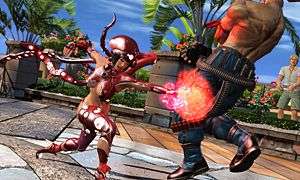 Added to all this, certain sets of characters have Tag combos that will only work with each other, so there’s a lot of nice variation to be had, even amongst a few characters. Another tactic you can use is utilizing the Tag Assault – using a Bound move (introduced in Tekken 6, a move that bounces your opponent off the floor, ready for a juggle) and pressing the tag button, you can bring in your partner for a continuing assault. They can either retreat back to the sidelines, or continue the fight in their partner’s stead (and if you choose to do that, you get a free Rage bar!). I’m almost overwhelmed by how much there is to this game.
Added to all this, certain sets of characters have Tag combos that will only work with each other, so there’s a lot of nice variation to be had, even amongst a few characters. Another tactic you can use is utilizing the Tag Assault – using a Bound move (introduced in Tekken 6, a move that bounces your opponent off the floor, ready for a juggle) and pressing the tag button, you can bring in your partner for a continuing assault. They can either retreat back to the sidelines, or continue the fight in their partner’s stead (and if you choose to do that, you get a free Rage bar!). I’m almost overwhelmed by how much there is to this game.
Each character has an animated ending, too, and most are light-hearted cinematic parodies. True Ogre’s ending, for example, is a nod towards Cloverfield’s found footage, while Bob becomes a superhero, and is shown to us through a sort-of animated comic. I’m surprised again by how good these endings are – the original Tekken Tag just gave us half-arsed 10 second animations of the fighters being silly. TTT2’s endings are fully animated cut-scenes, and whilst they don’t always look amazing, at least they deliver interesting viewing. I’m sure Lili’s was about 10 minutes long…
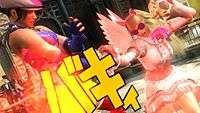 |
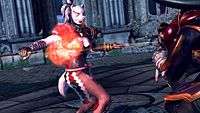 |
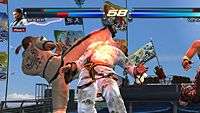 |
 |
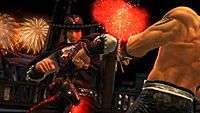 |
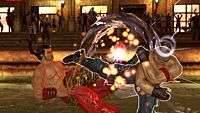 |
Tekken staples Team Battle, Survival, Time Attack and Practice make a return, and they pretty much do what they say on the tin. Team Battle allows you to select up to eight characters each and throw down over up to 16 bouts. Survival tasks you with, well, surviving against continuing enemies, your health bar being carried over to the next fight. Time Attack is a run through the Arcade mode, and your complete time is tracked on Global Leaderboard. Practice allows you to wail on a static opponent, trying out juggle combos, 10-hit combos, tag assaults, or just repeatedly kick your practice partner in the balls. Each of these modes comes with an obligatory achievement; ‘defeat 3 teams’, ‘survive 10 bouts’, ‘beat Time Attack in 20:00 mins’, and ‘deal over 1000 damage in practice’. These act as a nice incentive to just try the modes out, if even you don’t think you’ll stick with them, preferring the straight-up Arcade fights instead.
The achievements themselves are balanced and fair; you’ll find a lot of them will pop just as you play. There are some tricky ones in there – climbing to the top of the Arcade ladder to ‘become Tekken Lord in Offline Mode’ is going to take some doing. The trickiest one I’ve got so far was ‘Reach 1st Dan in Online Mode’ – there are some incredibly talented people out there already, and some people have already figured out exploits for infinite combos (actually, you can fight the ghost of Harada_TEKKEN, or Katsuhiro Harada, the Tekken director, and even he uses a tag assault glitch with Kuma/Heihachi). Overall though, the online lobbies are vastly improved from before. Maybe it’s because the game is new, or maybe it’s because the community is very lively at the moment, but I’ve never waited more than about a minute for a fight, and usually they’re of a similar rank to me.
Another nice little feature is when you’re waiting for a fight online, you get given the chance to enter a practice-room like bout against a Mokujin; the game’s trademark training dummy. This gives you chance to ‘warm up’ yourself before battles, try new combos or re-familiarise yourself with characters. It’s nice little touches like this that make me realise how much thought Namco have put into every bone of Tekken. Another little bonus is the combat information that scrolls across the bottom of the loading screens (which you’ll see quite a bit of) can be sped up – purely cosmetic, sure, but very pleasing. The game features Tekken Tunes, too; a new addition that lets you choose the music you want to play on each stage, with the option to import your own. To add an extra cherry on top of an already delicious cake, Namco are releasing a few rounds of free DLC to drop more fighters and stages into the game. That’s taking care of your fans. This is no Capcom.
Pros- Deep and engrossing fighting system, perfectly balanced and tactical
- Pick up and play; non-Tekken flatmates played and enjoyed it with me
- Quick, nicely laid out online lobbies with a satisfying UI and navigation
- The character roster is the biggest and deepest I’ve seen in a fighter
- Lots of bonus content and unlockable material gives the game longevity
- Loading times; not as bad as it could be, but it’s a notable pause when you’re itching for a fight
- Graphically, it’s very shiny, but not incredibly detailed
- Customisation is a bit more limited than it used to be, and a much longer process
This truly is an amazing fighting game. The best I’ve played since Soul Calibur IV, I think, and that was one of my favourite fighting games at all time. It may be a little soon to call it, but I reckon Tekken Tag Tournament 2 is my Game of the Year. It’s a true innovation for the fighting franchise, and it doesn’t feel gimmicky, like a lot of efforts from other fighting series. I’ve had about 25 hours hands on with the game, and it’s going to consume far more hours in the weeks to come. I’ve been up until 4am by accident because I got so into playing it, and that doesn’t happen to me anymore – ever.
Okay, so graphically it isn’t beautiful (but it’s not bad), and there are a couple of loading time issues (never too bad…), but the game’s a beast. There’s a ton of content in there, and even just battling through the ghosts of other fighters in Ghost mode can consume hours of your day. It’s a slick game, with a responsive and intelligent control scheme, and the Rage system offers an incredible change-up to the pace of the Tekken I know and love. This is the best thing that’s happened to the Tekken franchise in 10 years, and I now understand why there’s been such an online buzz about it.
Last five articles by Dom
- Defining Games, Part I: ‘Culture’
- Best of 2012 - 10 Games and Their Classic 8-Point Story Arcs
- 10 Games and Their Classic 8-Point Story Arcs
- Tekken Tag Tournament 2 - Review
- Tom Clancy’s Ghost Recon: Future Soldier - MP, Campaign, and Film Preview

















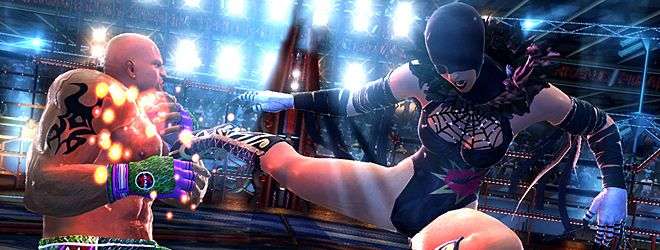
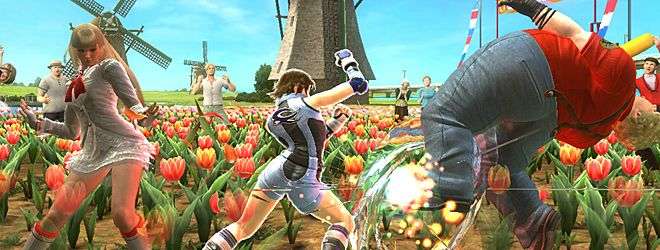
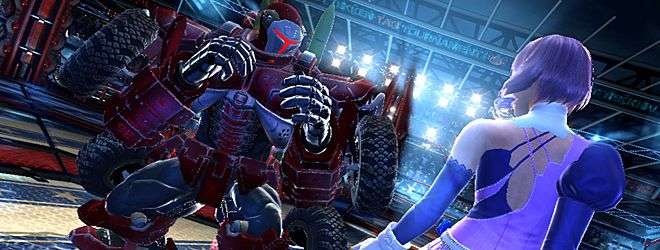
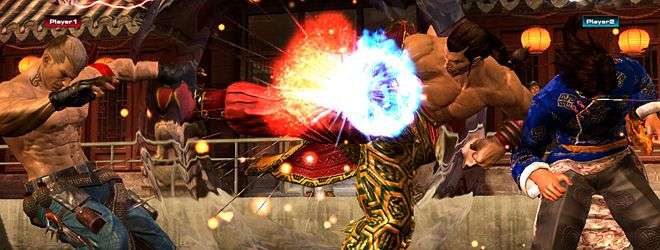






Excellent review as always, Dominic Glad to see you’ve got your fighters sorted for the next while too, though I doubt I’m ever going to be able to beat you.
Glad to see you’ve got your fighters sorted for the next while too, though I doubt I’m ever going to be able to beat you.